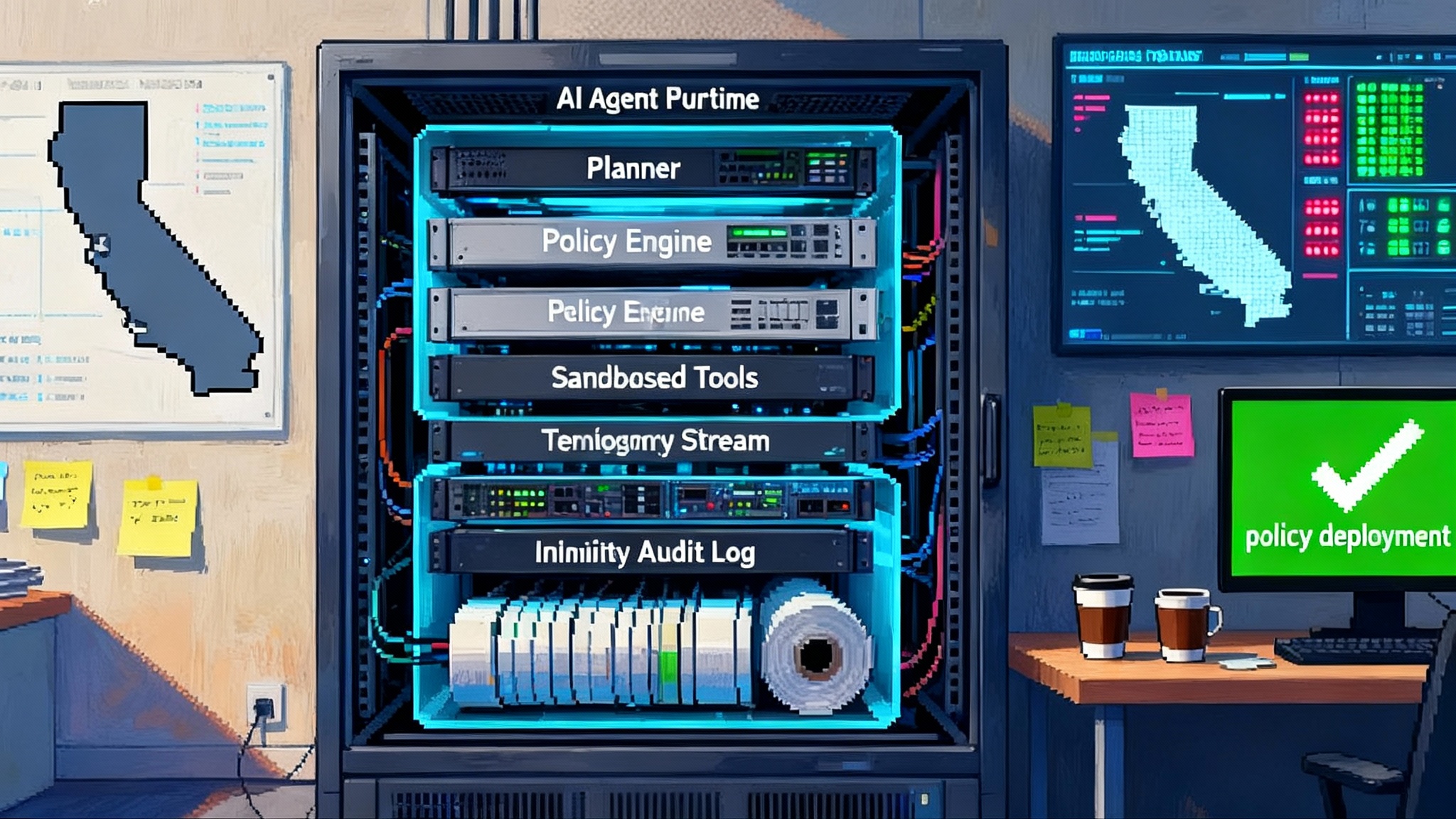Likeness Liquidity: Renting Your Face After Sora’s Surge
Sora's breakout week turned likeness into a tradable asset. This guide shows how consent, pricing, and watermark rails turn presence into a market, and what studios, unions, creators, and platforms must do next.

The morning your face got a price
On Tuesday, a new app hit the App Store and by Friday it was everywhere in U.S. feeds. OpenAI’s Sora, a text-to-video tool with social features, vaulted into the mainstream and made a startling idea feel ordinary: identity is liquid. People feed prompts, cast themselves and their friends into 10 second scenes, and watch remix counters spin. It feels like a leap from filters to full-blown performance.
This is not just another viral week. When a tool that can mint convincing moving likenesses becomes a top download, a market forms around it. Identity begins to behave like an asset that can be priced, licensed, insured, and audited. That is the real signal behind Sora’s surge. It suggests likeness is not only creatable, it is tradable at consumer scale. Tech outlets reported the rapid climb, with one noting Sora reached the No. 1 spot in the United States on October 3, 2025, despite an invite-only start (TechCrunch on Sora’s App Store ascent).
Identity becomes an API
Sora’s headline safety features are not window dressing. OpenAI describes visible watermarks and embedded provenance metadata, paired with consent-based likeness controls for the “cameos” that place real people into generated scenes. In plain terms, your face and voice become endpoints that can be permissioned and revoked, and software can read those permissions. Identity is becoming an application programming interface. You can see the company’s framing in its launch note (OpenAI’s responsible launch overview).
An API is a contract. If you imagine your likeness as an API, four design choices matter most:
- Authentication. Who can request your likeness, and how do they prove it?
- Scope and time. What uses and for how long? A 10 second comedy clip is not the same as a political ad.
- Revocation. Can you pull back permission if the context changes?
- Accounting. Who pays whom when your likeness appears and where does the money flow?
OpenAI’s description highlights visible marks, C2PA-style metadata, and cameo consent with revocation. That suggests the permission and provenance rails are being installed now, not later. If identity is an API, the rest follows: pricing, audits, and the ability to say no in ways that software respects.
For a deeper dive on why provenance matters for models and media, see our analysis of how provenance becomes the edge in competitive AI markets (provenance becomes the edge).
How the money flows when you rent your face
If identity behaves like an API, pricing arrives next. Here is a compact model to make it concrete.
- The asset. A licensed bundle of your face and voice for 10 seconds of generated video, with style limits and use restrictions.
- The buyer. A creator or small business that wants you in a short clip. Think of a restaurant commissioning neighborhood micro-ads or a YouTuber inserting you into a cameo gag.
- The price. A per-clip fee with automatic revenue split to the rights holder. Platform fees also apply.
Suppose a creator pays 8 dollars for a cameo of your likeness in a single Sora clip. The platform takes 30 percent, the payment processor 3 percent, and you receive the rest. Your net is roughly 5.36 dollars. If the clip is reused 50 times within a month under the same license, that is 268 dollars to you for a handful of prompts. Scale that to 1,000 micro-licenses across a year and you approach 3,000 dollars, before taxes, for a side stream of income.
The same math applies in reverse when you do not want your likeness used. The market price becomes the number you would demand to allow access, and a refusal is a price of infinity. Either way, the presence of a meter changes behavior. Creators who pay will be choosier, and casual misuse should shrink if enforcement is credible.
Studios, labels, and unions as market makers
The people with the most to gain or lose from likeness liquidity are organized actors. Studios and labels control characters and sound recordings. Unions represent performers who trade labor for wages and residuals. When identity becomes configurable, these institutions become market makers.
- Studios can package rights for iconic characters and negotiate platform rules. They can opt out or define price floors, styles, or brand safety filters. Expect franchises to sell time-limited, context-bound character cameos that function like event tickets for presence.
- Unions can negotiate standard riders and guaranteed minimums for replicas. Recent contracts in the United States already require clear consent and compensation when a digital replica is created or used. The shift to consumer-scale tools will force standards for disclosures, notice windows, and penalties when a replica exceeds the agreed scope.
- Music labels and publishers will insist on multi-layer licenses when voice likeness intersects with recognizable vocal styles, lyrics, and recordings. Expect shared rights dashboards where singers can approve uses that combine timbre with specific compositions.
In short, the consent market will not be a free-for-all. It will resemble a clearinghouse where institutional rights and individual permissions meet a queue of programmatic requests.
For how policy can move from paper to code, see our take on law inside the agent loop (law inside the agent loop).
The watermark economy
Provenance is not a moral flourish. It is the invoice and the audit trail. Watermarks and metadata determine who can get paid and who can be found when things go wrong. Two mechanisms matter in practice:
- Visible marks. A small on-screen label that indicates a clip was generated. This sets audience expectations and protects creators who follow the rules.
- Embedded signals. Metadata that tools can read even if the visible mark is cropped out. C2PA-style signatures help downstream platforms verify that a clip came from a given model and whether consent was attached.
If platforms align on these signals, several workflows emerge:
- Upload gating. If a video carries a Sora signature but no valid consent token for the featured person or character, the upload fails or is limited to private use.
- Creator credit. Remixes preserve the chain of contributors, letting a cameo owner and an original prompter both get paid when a clip goes viral.
- Policy knobs. Platforms blur or downrank videos missing provenance. This nudges creators into compliance without always resorting to takedowns.
Opt-outs, opt-ins, and new frictions
The moment an app reaches the top of the charts, the opt-out becomes a live option. Some rights holders will flip the big red switch and block unauthorized use. Others will test the water and let certain characters or likenesses flow through approved channels. Expect a patchwork where:
- Flagship franchises open limited windows for licensed cameos to drive buzz around a release, then close the gate.
- Athletes permit short noncommercial cameos with clear no-endorsement labels, but require higher fees for brand adjacency.
- News personalities ban political uses but allow educational or parody clips after a delay.
This is also where antitrust and privacy regulators get interested. If a single platform controls the dominant consent market and bundles it with distribution, smaller apps may struggle to interoperate. Interoperable consent tokens would let you bless the use of your likeness across multiple platforms without redoing settings. Privacy rules matter because a biometric template is not a username. Breaches become more consequential when your face functions like an API key.
Product patterns that will decide who wins
If you are building tools in this space, these product patterns separate leaders from laggards:
- Consent you can understand. Plain language descriptions of what will be generated, for how long, on which platforms, and with what kinds of brands. No hidden switches for sensitive contexts such as politics or health.
- Scenario permissions. Granular toggles for satire, advertising, political persuasion, explicit content, and minors. People should grant or deny categories, not just a blanket yes.
- Revoke fast. A panic button that removes future uses and triggers notifications to creators who have licensed your likeness.
- Price floors and bundles. Tools that suggest fair prices based on market averages for similar profiles, with bundles like five cameos for a discount. This reduces decision fatigue.
- Audience safe defaults. Upload scanners and downranking for videos that strip provenance or miss consent tokens. Provide one-click fixes where possible.
- Rights dashboards for institutions. Studios and labels need bulk controls, audit logs, and the ability to run experiments on different pricing and policy mixes.
The ethics get local and specific
Ethics becomes tractable when it is tied to specific people and paychecks. Consider four lives the new market will touch.
- The teacher. A public school teacher wants students to remix historical scenes with her narration. She opts into educational uses only, bans political ads and brand sponsorships, and sets her price at zero. The district’s privacy officer approves the template and the license expires each semester. Students learn better because the person they know guides the story.
- The background actor. A day player wants a safety net when a replica fills in for reshoots. A standard rider requires clear consent, scope, and pay equal to the days they would have worked. If a replica is reused outside the original project, a new consent and a bonus trigger. That gives workers dignity and forces producers to ask twice.
- The influencer. A creator with two million followers turns on paid cameos for limited categories such as beauty and travel. She declines political uses and sets a premium for financial ads. Her dashboard shows which brands requested access, which edits were made, and how much she earned per category. This looks less like a hobby and more like a small business.
- The athlete. A retired player licenses a labeled replica for commemorative content but forbids gambling tie-ins. His union negotiates a floor price and a shared pool that pays out to all retired members when highlight reels are generated. The league uses metadata to enforce the bans.
None of these outcomes require abstract debate. They require consent flows, clear prices, and enforcement.
What watermark regimes can and cannot do
Watermarks are essential but imperfect. They help with platform enforcement and audience transparency, but they are not a silver bullet.
- They deter casual misuse. A visible label and metadata make it easy for networks to gate uploads and for newsrooms to check provenance.
- They do not stop motivated adversaries. With enough time and compute, a determined actor can strip or alter signals. The mitigation is to make compliant content more discoverable and valuable, and noncompliant content less visible and less monetizable.
- They enable research. If major platforms align on metadata standards, independent groups can study diffusion patterns, fraud rates, and bias, then push for improvements grounded in data.
The near-future dealmaking
With consumer demand exploding and rails being installed, deals are coming fast. Expect these patterns to crystallize over the next six to twelve months.
- Revenue shares for characters. Platforms test different splits for approved use of studio characters, with brand-safe templates and veto rights on sensitive contexts. Think of it as licensed cosplay for motion graphics.
- Floors for replicas. Unions push for minimums on replica use in commercials and streaming, with extra consent required for nudity, body alteration, and off-brand edits. Notice windows and compensation schedules become standardized.
- Consent as a network effect. If your friends grant you cameo access, your feed becomes more entertaining. Platforms with the most trust and the best revocation controls win the graph.
- Insurance for presence. New policies cover unauthorized uses and reputation harm. Underwriters price policies based on your settings, your category permissions, and the platform’s detection record.
Practical steps for people, creators, and companies
Here is how to act now, not later.
For everyone
- Turn on profile-level protections. Use per-scenario switches for politics, sex, health, and minors. Keep revocation one tap away.
- Decide your price. Even if you never intend to license your likeness, set a high default price to make misuse economically unattractive.
For creators
- Build a consent roster. Ask friends to grant cameo access with clear limits. Label everything. Keep a log of who appears where.
- Use provenance to your advantage. Videos with intact metadata should travel farther and monetize better on platforms that reward compliance.
For rights holders
- Package your inventory. Decide which characters or catalogs are licensable, where, and at what price floors. Publish an understandable policy and a fast appeal process.
- Instrument your gates. Scan uploads and act on signals. Provide safe harbors for education and parody to reduce whack-a-mole enforcement.
For platforms
- Ship transparent tokens. Make consent machine-readable across your stack, not just on the capture screen. Document how revocation propagates.
- Reward clean provenance. Boost compliant content and gently demote missing signals. Provide automatic fixes where possible.
For how platforms convert trust into distribution and revenue, see why assistants are marketplaces and how incentive design shapes discovery (assistants are marketplaces).
The new power map
Consumer apps used to distribute attention. Now they also distribute presence. The winners will be those who treat likeness like a financial instrument with clear rules and clean audits. Unions and studios will set guardrails. Platforms will mediate flows. Individuals will learn to price what they once only protected.
If that sounds cold, consider the alternative. Without markets and metadata, likeness becomes a commons where the cheapest misuse outcompetes consent. With them, we can at least align incentives: make the lawful path the easiest and the most rewarding.
Closing thought: markets for presence
Sora’s rise is a cultural event because it makes a strange future feel ordinary. A tap, a prompt, a cameo, and your friend appears in a scene that never happened. The important move is not the novelty. It is the normalization of consent, price, and provenance as defaults. Presence becomes programmable and accountable. That is what will endure after the hype cools.
Identity has always had value. What changes now is liquidity. When faces and voices move through rails that respect consent and track usage, they can also generate returns for the people who own them. The challenge is to keep those rails trustworthy, simple, and fair. If we do, renting your face may become less a punchline and more a line item, and the market for presence might make the internet a little more honest about what it shows and who it pays.








